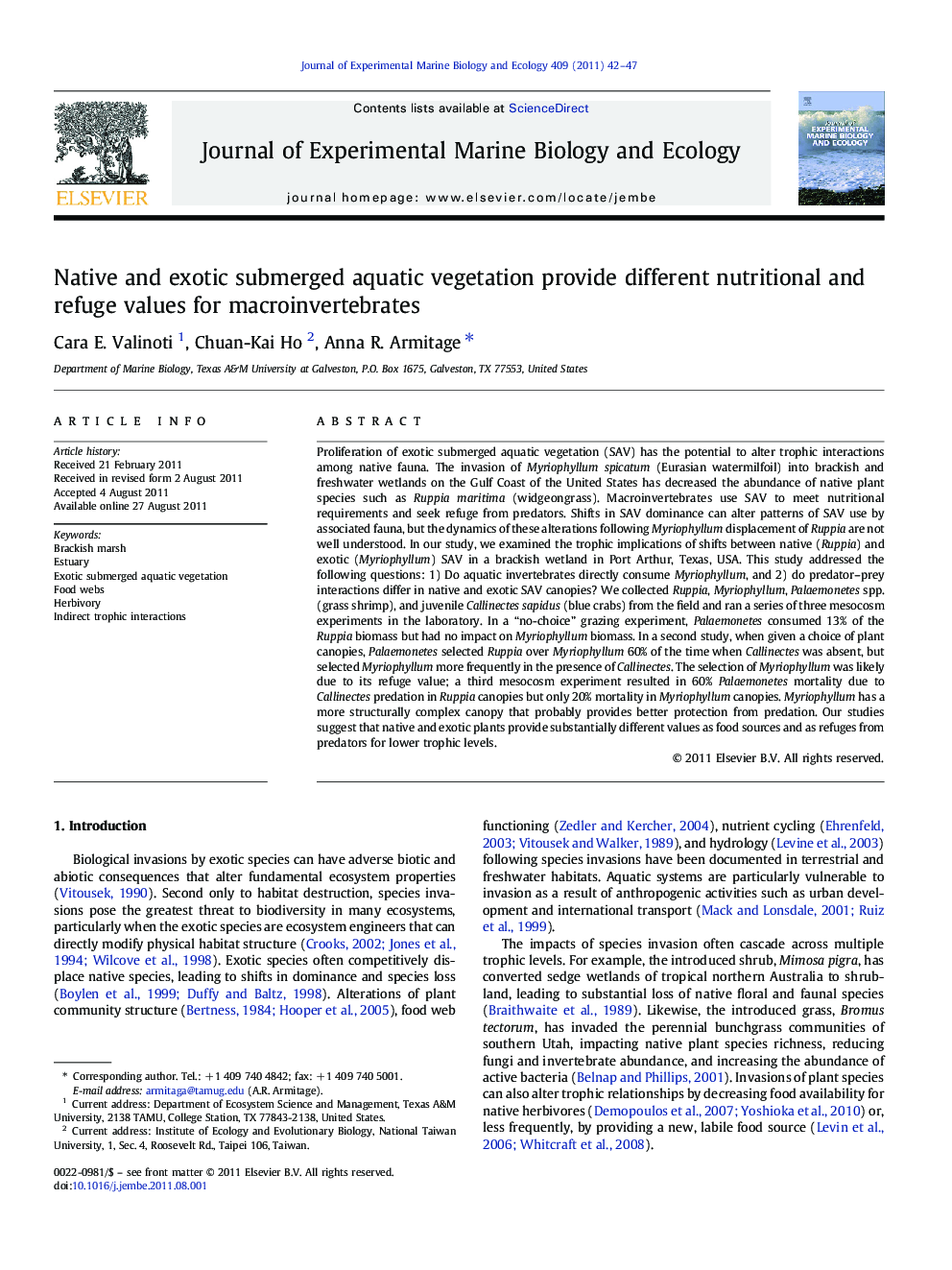| کد مقاله | کد نشریه | سال انتشار | مقاله انگلیسی | نسخه تمام متن |
|---|---|---|---|---|
| 4396171 | 1618455 | 2011 | 6 صفحه PDF | دانلود رایگان |

Proliferation of exotic submerged aquatic vegetation (SAV) has the potential to alter trophic interactions among native fauna. The invasion of Myriophyllum spicatum (Eurasian watermilfoil) into brackish and freshwater wetlands on the Gulf Coast of the United States has decreased the abundance of native plant species such as Ruppia maritima (widgeongrass). Macroinvertebrates use SAV to meet nutritional requirements and seek refuge from predators. Shifts in SAV dominance can alter patterns of SAV use by associated fauna, but the dynamics of these alterations following Myriophyllum displacement of Ruppia are not well understood. In our study, we examined the trophic implications of shifts between native (Ruppia) and exotic (Myriophyllum) SAV in a brackish wetland in Port Arthur, Texas, USA. This study addressed the following questions: 1) Do aquatic invertebrates directly consume Myriophyllum, and 2) do predator–prey interactions differ in native and exotic SAV canopies? We collected Ruppia, Myriophyllum, Palaemonetes spp. (grass shrimp), and juvenile Callinectes sapidus (blue crabs) from the field and ran a series of three mesocosm experiments in the laboratory. In a “no-choice” grazing experiment, Palaemonetes consumed 13% of the Ruppia biomass but had no impact on Myriophyllum biomass. In a second study, when given a choice of plant canopies, Palaemonetes selected Ruppia over Myriophyllum 60% of the time when Callinectes was absent, but selected Myriophyllum more frequently in the presence of Callinectes. The selection of Myriophyllum was likely due to its refuge value; a third mesocosm experiment resulted in 60% Palaemonetes mortality due to Callinectes predation in Ruppia canopies but only 20% mortality in Myriophyllum canopies. Myriophyllum has a more structurally complex canopy that probably provides better protection from predation. Our studies suggest that native and exotic plants provide substantially different values as food sources and as refuges from predators for lower trophic levels.
► Grass shrimp consumed more native than exotic submerged aquatic vegetation.
► Crab predation success was higher in the less complex native plant canopy.
► Grass shrimp selected the exotic plant in the presence of crab predators.
► Native and exotic SAV provided different food and refuge values for herbivores.
Journal: Journal of Experimental Marine Biology and Ecology - Volume 409, Issues 1–2, 1 December 2011, Pages 42–47